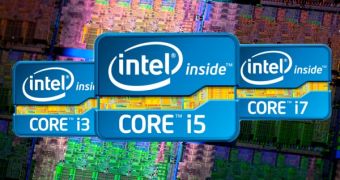It appears that, even though the official launch happened sooner than originally planned (January 5), the Sandy Bridge series of central processing units from Intel is already basking in a slew of design wins, no doubt secured thanks, in part, to the new technologies they support.
The newly released collection of Sandy Bridge processors has already been revealed to include high-end, mainstream and low-end desktop processors, in addition to mobile chips.
One can even divide the units into two groups, those with a K suffix, which have a fully unlocked multiplier (for high overclocking), and the rest, which either have 'limited unlocked' cores or no multiplier at all.
What they do stand out for is a collection of technologies that improve their functionality and feature support, in addition to raw performance.
The Turbo Boost dynamic overclocking technology, which can down-clock or disable cores in order to boost used ones, is just one example.
There is, for instance, the rather self-explanatory Clear Video HD technology, as well as the InTru 3-D which enables viewing of stereoscopic 3D media.
Intel also implemented the Quick Sync Video hardware accelerator, which makes video encoding faster, plus the WiDi 2.0 technology.
WiDi 2.0 basically allows users to stream video from a laptop to a HDTV over a wireless connection and in quality of up to 1,080p.
"The new 2nd Generation Intel Core processors represent the biggest advance in computing performance and capabilities over any other previous generation," said Mooly Eden, vice president and general manager, PC Client Group, Intel.
"The built-in visual capabilities enabled by these new processors are stunning. This combined with improved adaptive performance will revolutionize the PC experience in a way that is obvious for every user to see and appreciate – visibly smarter performance," Eden added.
Intel is said to have already scored over 500 desktop and laptop design wins, meaning that it all comes down to when the various PC suppliers decide to deliver their products, probably during CES, 2011.

 14 DAY TRIAL //
14 DAY TRIAL //